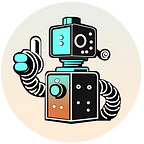Unleashing the Potential of Digital Twins: Exploring Real-Time Simulations and Alternate Realities
What makes a Digital Twin?
A digital twin is essentially a real-time digital representation of an object or system in the physical world. Unlike human twins, a digital twin does not have its own separate existence but instead remains synchronized with its physical counterpart. By capturing and digitizing the telemetry data generated by a real-world object, and then visualizing it in a simulation, valuable insights can be gained, and the data can be utilized for performing simulations.
Once the object or system is digitized, it becomes possible to explore various “What-If Scenarios” and simulate alternate realities. A digital twin can operate in real-time, replay past data, fast forward to the future, and even simulate events that have not yet occurred, or hopefully will never occur.
Capturing Data for a Twin
To create a digital twin, the first requirement is a source that generates data. This data needs to be collected and aggregated. Subsequently, the data is stored and can be streamed to other interested parties. Additionally, simulation techniques can be employed to help understand edge cases and extreme conditions that may be challenging to replicate in the real world.
To create a digital twin that can store and handle a substantial amount of data, a robust cloud data storage system is indeed essential. Cloud storage provides numerous benefits for digital twin applications, including scalability, accessibility, and reliability. This is where utilizing Microsoft Azure to help store you data is key!
By utilizing cloud-based storage solutions, the digital twin can store and manage large volumes of data generated by the real-world object or system it represents. This data can include telemetry information, sensor readings, historical records, and other relevant data points.
Utilize the Azure Cloud
A Cloud storage system like Microsoft Azure offers high scalability, allowing the digital twin to accommodate increasing data volumes as needed. They can dynamically adjust storage capacity to meet the twin’s evolving requirements without requiring significant hardware upgrades or modifications.
In addition, cloud storage enables easy accessibility to the data for authorized parties. Stakeholders, researchers, or other interested parties can securely access and retrieve the stored data from anywhere with an internet connection, facilitating collaboration and analysis.
Reliable, Time Series Data
Another advantage of using a cloud-based storage system is the reliability it offers. Cloud providers often employ redundant data storage mechanisms and backup strategies to ensure data durability and minimize the risk of data loss. This helps to maintain the integrity and availability of the digital twin’s data over time.
By integrating the enterprise-class scalability and reliability of Azure IoT Hub and Azure Digital Twins, along with a cutting-edge visualization platform like NVIDIA’s Omniverse, a new breed of digital twin emerges.
Use Azure IoT Hub’s Scalability
Azure IoT Hub provides a robust and secure cloud-based infrastructure for managing and connecting IoT devices, facilitating the seamless flow of data between the physical object and its digital twin. It offers features like device management, data ingestion, and real-time communication, ensuring the digital twin stays in sync with its physical counterpart.
Leverage Azure Digital Twins
Azure Digital Twins takes this a step further by providing a comprehensive platform for modeling and simulating complex environments. It enables the creation of rich and interactive digital representations that capture not only the physical attributes but also the relationships and interactions between various elements within the system. This allows for detailed analysis, monitoring, and optimization of the real-world object or system.
Integrate with AI Models
Harnessing the power of AI, we can create a “ Digital Twins Copilot” that facilitates seamless integration between your logical digital twin and its 3D simulation, enabling precise behavior definition. Additionally, AI can assume the role of a virtual security guard or sentinel, diligently monitoring for any anomalies or deviations from the norm.
Visualize in Omniverse
To enhance the visualization and immersion of the digital twin experience, NVIDIA’s Omniverse comes into play. Omniverse is a state-of-the-art visualization platform that leverages real-time ray tracing and simulation capabilities. It enables high-fidelity rendering and interactive exploration of the digital twin’s virtual environment, bringing it to life with stunning visuals and realistic physics simulations.
Bringing It All Together as One
By combining the power of Azure IoT Hub and Azure Digital Twins with NVIDIA’s Omniverse, this new type of digital twin provides an enhanced and immersive experience for users. It allows for advanced analysis, visualization, and collaboration, enabling stakeholders to gain deeper insights, perform what-if scenarios, and make informed decisions based on the data and simulations generated by the digital twin.
Coming soon
Overall, this integration of Azure’s IoT and digital twin capabilities with NVIDIA’s Omniverse opens up exciting possibilities for creating and leveraging next-generation digital twins in various domains, ranging from smart cities and industrial systems to healthcare and beyond.
With still in development and prototyping, Digital Bot Lab’s dedication to pushing the boundaries of technology is poised to make a significant impact in transforming industries through its groundbreaking Digital Twin solution! Stay tuned to our upcoming developments as we continue to innovate and develop in this space!
Originally published at https://www.digitalbotlab.com.
